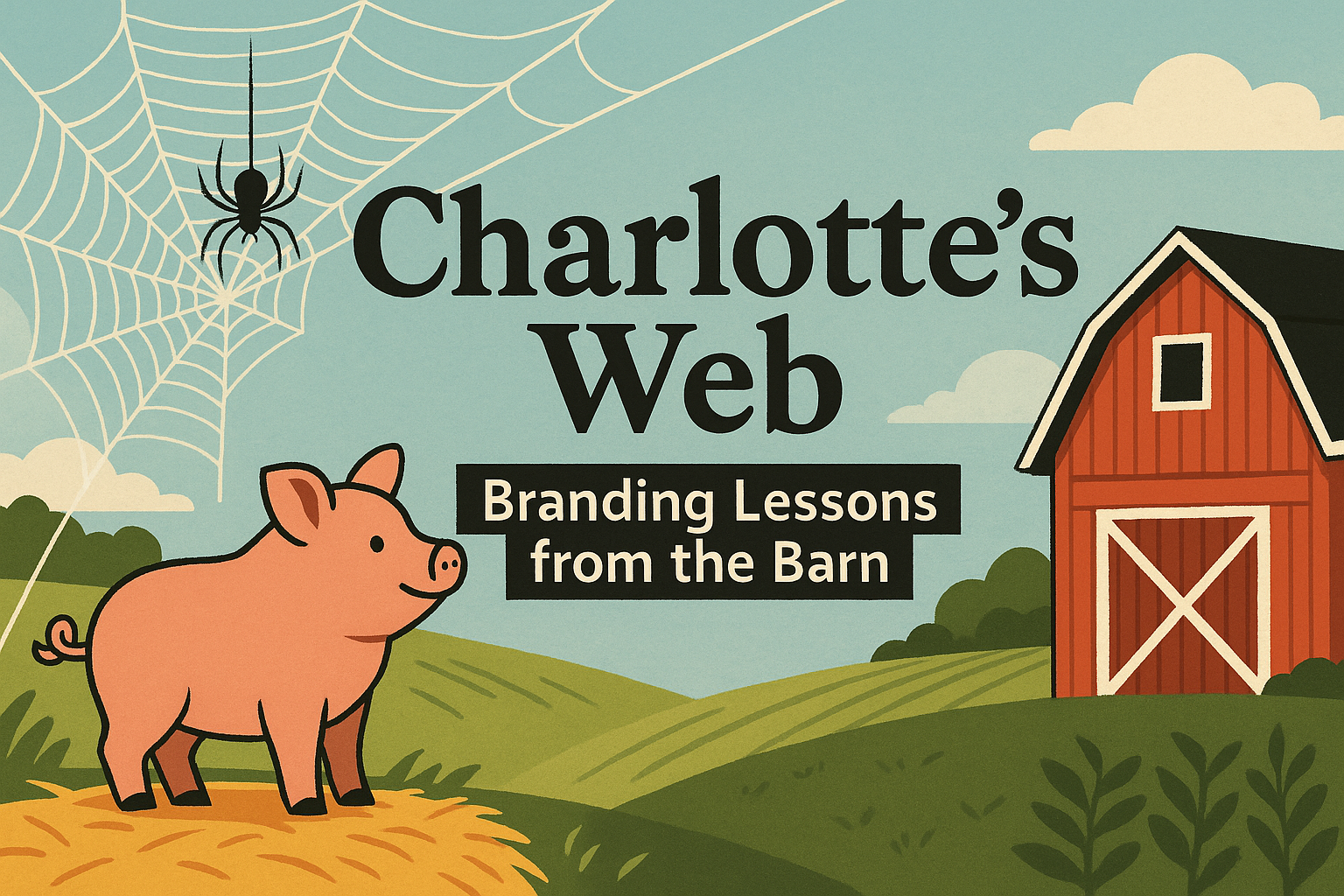What Charlotte’s Web Teaches Us About Brand Storytelling
Lessons in Communication from Charlotte’s Web
E.B. White’s Charlotte’s Web, first published in 1952, tells the story of Wilbur, a pig, and Charlotte, a spider who writes words in her web to save him from slaughter. While it’s a children’s classic, the novel offers several clear parallels to principles of effective communication, branding, and messaging used in advertising and marketing today.
Positioning
When Wilbur’s life is threatened, Charlotte reframes his identity through her web messages, beginning with “Some Pig.” In marketing terms, this serves as a brand differentiation strategy, amplifying positive qualities, creating intrigue, and shaping perception.
Key takeaway: Positioning involves presenting what’s true in a way that makes it stand out.
Audience Psychology
Charlotte tailors her messages to her audience, the Zuckermans and their neighbors, using emotionally resonant language rather than purely logical arguments. Words such as “Radiant” and “Humble” evoke wonder and connection.
Key takeaway: Effective messaging often appeals to both emotion and intellect, addressing the audience’s values and beliefs.
Scarcity, Urgency, and Storytelling
Charlotte frames Wilbur’s situation as an unfolding story, creating stakes, a protagonist, and a timeline. Her approach mirrors common marketing techniques:
Scarcity: Emphasizing Wilbur’s rarity.
Urgency: Linking decisions to the upcoming fair.
Social Proof: Building credibility through public attention.
Key takeaway: Storytelling structures can make messages more memorable and impactful.
Simplicity in Language
Charlotte uses short, clear words, each functioning like a slogan. “Some Pig” and “Radiant” are direct, memorable, and free from unnecessary detail.
Key takeaway: Concise, powerful language is more likely to stick in the audience’s mind.
Brand Loyalty and Legacy
Through consistent messaging and personal sacrifice, Charlotte fosters an emotional connection to Wilbur. This connection lasts beyond the immediate campaign to save him.
Key takeaway: Long-term loyalty often grows from sustained, authentic engagement.
Strategic Communication Practices
Charlotte demonstrates principles similar to those used in content strategy:
Choosing the right medium (her web).
Maintaining a clear, consistent tone.
Timing messages for maximum effect.
Ensuring each message adds something new.
Key takeaway: Successful communication often involves careful planning and thoughtful sequencing.
Charlotte’s Web illustrates how words can shape perception, influence decisions, and create lasting impressions. Although written for children, its narrative offers enduring lessons in positioning, emotional appeal, storytelling, simplicity, and strategic communication, concepts that remain central to modern marketing and branding.

